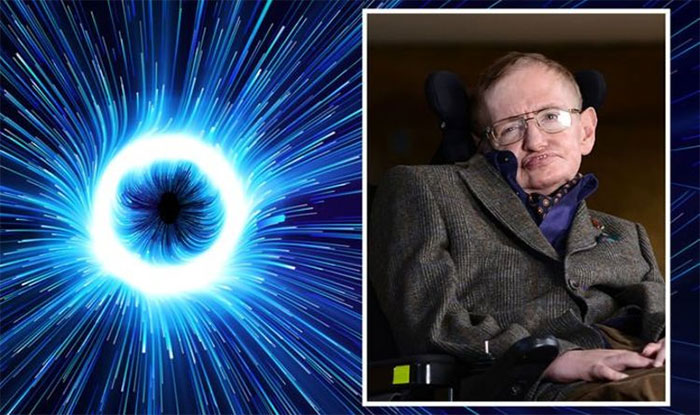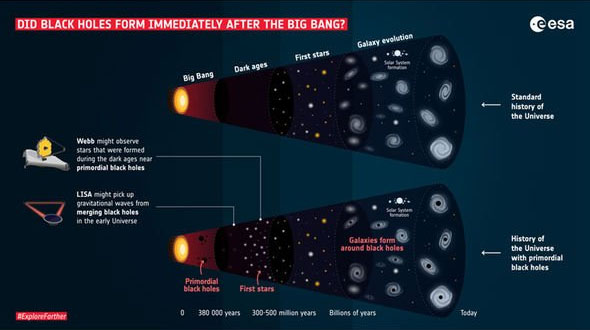Stephen Hawking's theory about to crack the biggest mystery of science?
Scientists have teamed up to solve one of the universe's greatest mysteries. They plan to test a prediction made by Stephen Hawking in the 1970s.

Scientists will test Stephen Hawking's theory to crack the mystery of dark matter.
The nature of dark matter has baffled scientists for decades, even though it makes up 85% of all matter in the universe. Scientists cannot see it, measure it, or interact with it in any way, however, they do doubt that it exists because of the way our universe was formed. Simply put, without the main source of gravity holding the galaxies together, the motions of the galaxies would "rip" them apart.
Many theories have been put forward to explain dark matter, from new theoretical particles to gravity leaking into our world from another dimension. However, a team of researchers from the US and Europe have taken a different route, trying to figure out if dark matter and black holes are the same or similar.
Black holes are one of the most mysterious stellar objects in the entire universe. First mentioned by Albert Einstein's theory of general relativity in 1915, they exist as points in time and space where the collapse of a massive star results in matter being compressed in a infinitely small space. This singularity breaks all known laws of physics and anything, even light, gets trapped in its gravity, disappears forever.

The team will use data from the James Webb Space Telescope.
Recently, astrophysicists from the University of Miami, Yale University and the European Space Agency (ESA) have suggested that so-called primordial black holes could be used to explain all matter. dark in the galaxy.
Unlike ordinary or supermassive black holes, these hypothetical objects form shortly after the Big Bang, which is also problematic because they won't have enough time to grow. That's why, scientists suggest that primordial black holes were there in the first place and could explain why we can't detect dark matter.
The theory is put forward in a paper pending publication in the Astrophysical Journal.
Nico Cappelluti, an assistant professor of physics at the University of Miami, said: "Our study predicts what the early universe would have looked like if dark matter was produced by black holes that formed during the Crash. Big Bang – just as Stephen Hawking suggested in the 1970s. This will have some important implications.First, we don't need 'new physics' theories to explain dark matter.Read More Furthermore, this will help us answer one of the most intriguing questions of modern astrophysics: How did the supermassive black holes in the early universe grow so quickly? mechanisms that we observe today in the modern universe, they would not have had enough time to form.This will also solve the longstanding mystery of why the mass of a galaxy is always proportional to the mass of the supermassive black hole at its center."
The researchers will test their theory with the help of the James Webb Space Telescope (JWST), the largest and most powerful space telescope ever built. The NASA and ESA telescopes are scheduled to launch on Christmas Eve and will detect light from stars some 13.5 billion light-years away - one of the earliest in the universe.
- The biggest mystery of scientist Stephen Hawking
- Stephen Hawking's life through photos
- Why does the new cosmic theory make Stephen Hawking angry?
- Stephen Hawking has just signed a letter to protect the doctrine of the origin of the universe
- Universe origin according to Stephen Hawking's theory
- What is chaos theory?
- The final study by physicist Stephen Hawking is published
- The extraordinary energy of genius with IQ 160
- The mystery of the past army
- Stephen Hawking is accused of
- The sick life of Stephen Hawking's genius has become a medical mystery
- Black hole and Hawking paradox
 Van Allen's belt and evidence that the Apollo 11 mission to the Moon was myth
Van Allen's belt and evidence that the Apollo 11 mission to the Moon was myth The levels of civilization in the universe (Kardashev scale)
The levels of civilization in the universe (Kardashev scale) Today Mars, the sun and the Earth are aligned
Today Mars, the sun and the Earth are aligned The Amazon owner announced a secret plan to build a space base for thousands of people
The Amazon owner announced a secret plan to build a space base for thousands of people